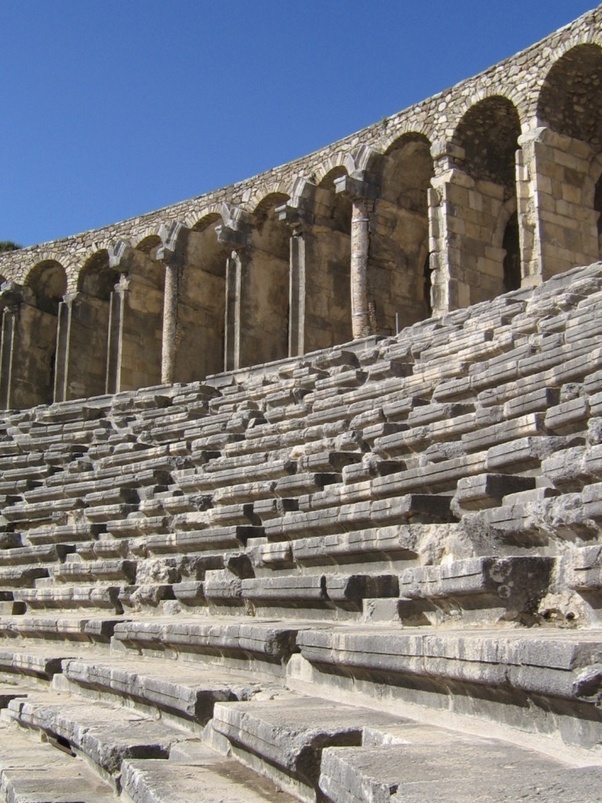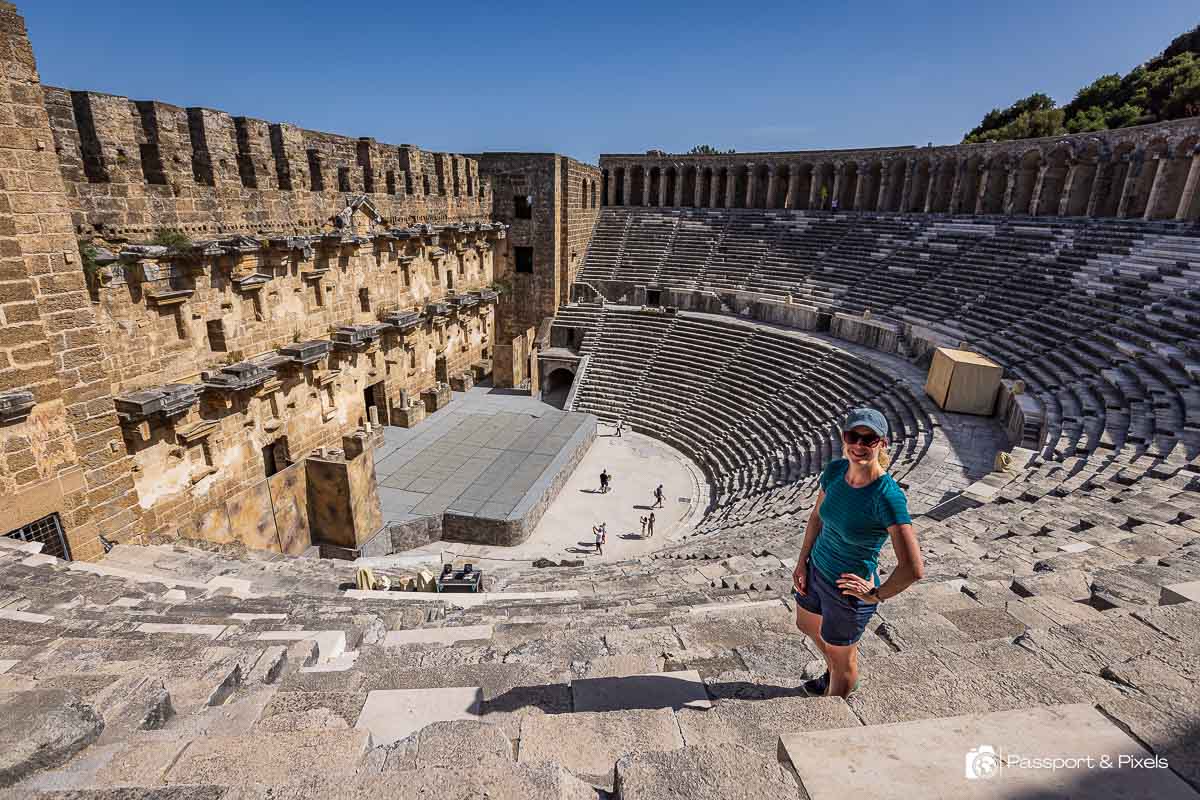🏛 The 2nd century CE Roman theatre at Aspendos, Antalya, modern-day Türkiye. The theatre was built during the reign of the Roman emperor Marcus Aurelius (161-180 CE), and designed by a Greek architect Zeno, who was born in Aspendos. Photo source: Traces of History and Archaeology FB Page.

The Roman theatre at Aspendos, located in the Antalya province of modern-day Türkiye, stands as one of the best-preserved examples of Roman theatre architecture. Constructed during the reign of Emperor Marcus Aurelius, from 161 to 180 CE, this monumental structure showcases the architectural ingenuity and cultural significance of the period.
The theatre was designed by the Greek architect Zeno, a native of Aspendos, who employed both Roman and Greek architectural elements. The cavea, or seating area, is semi-circular and could accommodate approximately 15,000 to 20,000 spectators. It is divided into two sections by a wide diazoma, a horizontal walkway that allowed for easier access to seats.
The stage building, or scaenae frons, is particularly notable for its intricate and well-preserved decorative elements. It originally featured a two-story façade adorned with columns, niches, and statues, creating a visually striking backdrop for performances. The stage itself was equipped with an elaborate system of pulleys and trapdoors, allowing for complex theatrical productions.
One of the theatre’s most remarkable features is its acoustics. The design of the semi-circular seating and the construction materials used in the stage building allow sound to travel clearly and efficiently throughout the entire space. This acoustic precision ensured that even the slightest whisper on stage could be heard by audiences seated in the furthest rows.
In addition to its architectural marvels, the Aspendos theatre played a significant role in the social and cultural life of the city. It hosted a variety of events, including dramatic performances, musical concerts, and gladiatorial contests, serving as a central gathering place for the community.
The theatre has undergone several restorations over the centuries, preserving its grandeur and functionality. Today, it continues to be a popular tourist attraction and a venue for cultural events, such as the annual Aspendos International Opera and Ballet Festival, which draws visitors from around the world to experience the timeless allure of this ancient structure.







